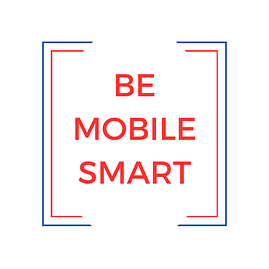Dear Ms. Smartphone: I am spending a lot of time with my co-workers on Zoom and other video platforms; then I do online yoga in the evenings. When I am working I find that I am really distracted by the backdrops and feel like I am peering into people’s personal lives. Do I say something? When I do yoga, I feel alone and I miss the studio. At the end of the day I am really tired even though I have not gone out ? Is it like this for others during the quarantine? Valerie, Sausalito
Dear Valerie: These are indeed unusual times and I hope that you have a support network of friends and family. It’s good to reach out to others. They are probably feeling just like you.
We are all learning new communications etiquette. When we meet in person, say for a business meeting, all parties process the visual cues in micro-seconds… that’s probably why in-person meetings start off slowly with small talk. When you get invited to the boss’s office for the first time or have a job interview with a higher-up, subconsciously process data about this new space. You observe the decorations, diplomas and favorite photos, and spatial layout, as you also (try to) maintain the thread of conversation.
Kinesics
So, your question about backgrounds and micro-cues is relevant. Ray Birdwhistell, whom I studied with at Penn, proposed that kinesics, the study of human body motion, is culturally specific, and deeply invisible. There is a maxim frequently attributed to him that 30 to 40 percent of communications is verbal and 60 to 70 percent is paralinguistic (body language). I honestly never heard him say this. But, he did believe that all movement conveyed meaning. He would have a heyday today processing all the gestures, twitches, and blinks on telework channels.
Perhaps that is what makes Zoom-like video so tiring. We are trying to follow the the cues, but can’t quite grasp the subtlety: the speaker’s lips, eyebrows raise and lower, eye squint, flick of the hair: kinesics we need to interpret and respond to if we verbally jump in or back off.
Connection Channels !!
Meanwhile, there is a third channel that Birdwhistell could not anticipate. We also have to process imperfect technology: things like a fuzzy connection, asynchronous dialogue, and poor background lighting. While TV watching brings expectations for professional media, this standard does not happen from home. I know this linked study was done in 2017 to support a video compression pitch…… but it suggests that we use subconscious reactions to judge video.

Does lower quality streaming decrease happiness and focus, and increase negative emotions? And, does better streaming make us happier, as the image suggests? Here is a PhD dissertation ready to be written!
Pink Kitty Backgrounds
During the past week, I found that simplicity works… yoga studios that stream a class with a blank wall and a live instructor keep my focus. That said, instructors who would normally be effective in-person do not necessarily translate well or telegenically into video.
And, like you I find that meetings or classes with teleworkers can be jarring. Instead of focusing on the conversation, my attention wanders to the pink-kitty pillows and lumberjack shirts (are they really wearing pants?) Even when the background is a non-descriptive doorframe or window, our minds leap to fill in the pattern of the full room.
There’s a reason that business people have discovered backdrops, just like professionals on TV news! So, for practical tips, see this helpful Wall St. Journal article.
Video UNHappy Hours…
Perhaps the ultimate stress is “video happy hour.” It tends to be less happy that it sounds because of the intense time we stare at the screen without being able to look away and wander out. If we were sitting at a bar stool ‘IRL’ we might be nominally engaged with our phone, with the bartender and guests, and reacting, in a subtle way to sounds and motion throughout the establishment.
When we sit at home, it is all so new, and we are learning thee new video protocols together. As the technology matures, and we mature with it, we will, collectively, become more adept at reading on-line kinesics, wandering on and off the screen both mentally and physically, and settling into other peoples’ personal spaces.

Leave a Reply
You must be logged in to post a comment.